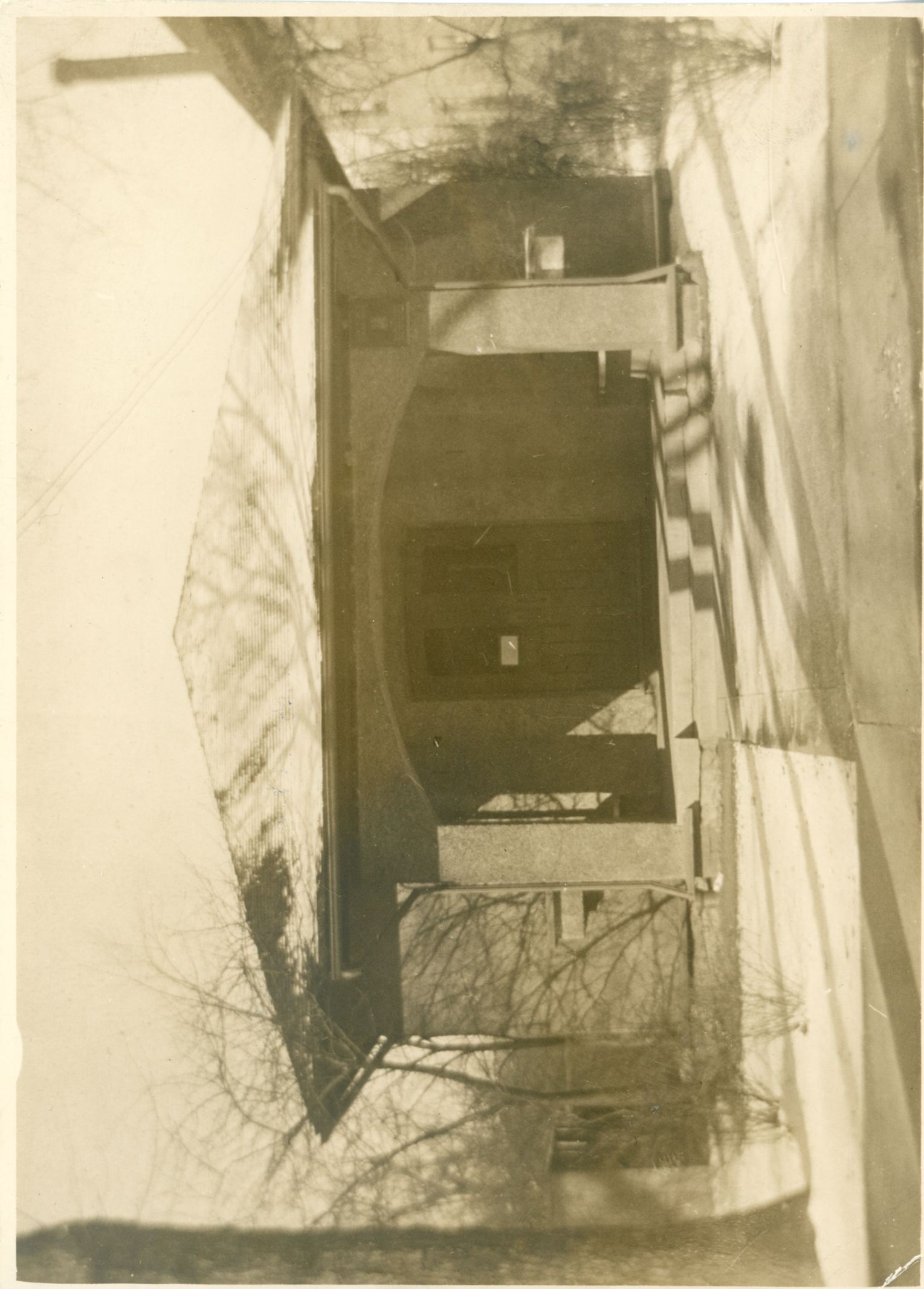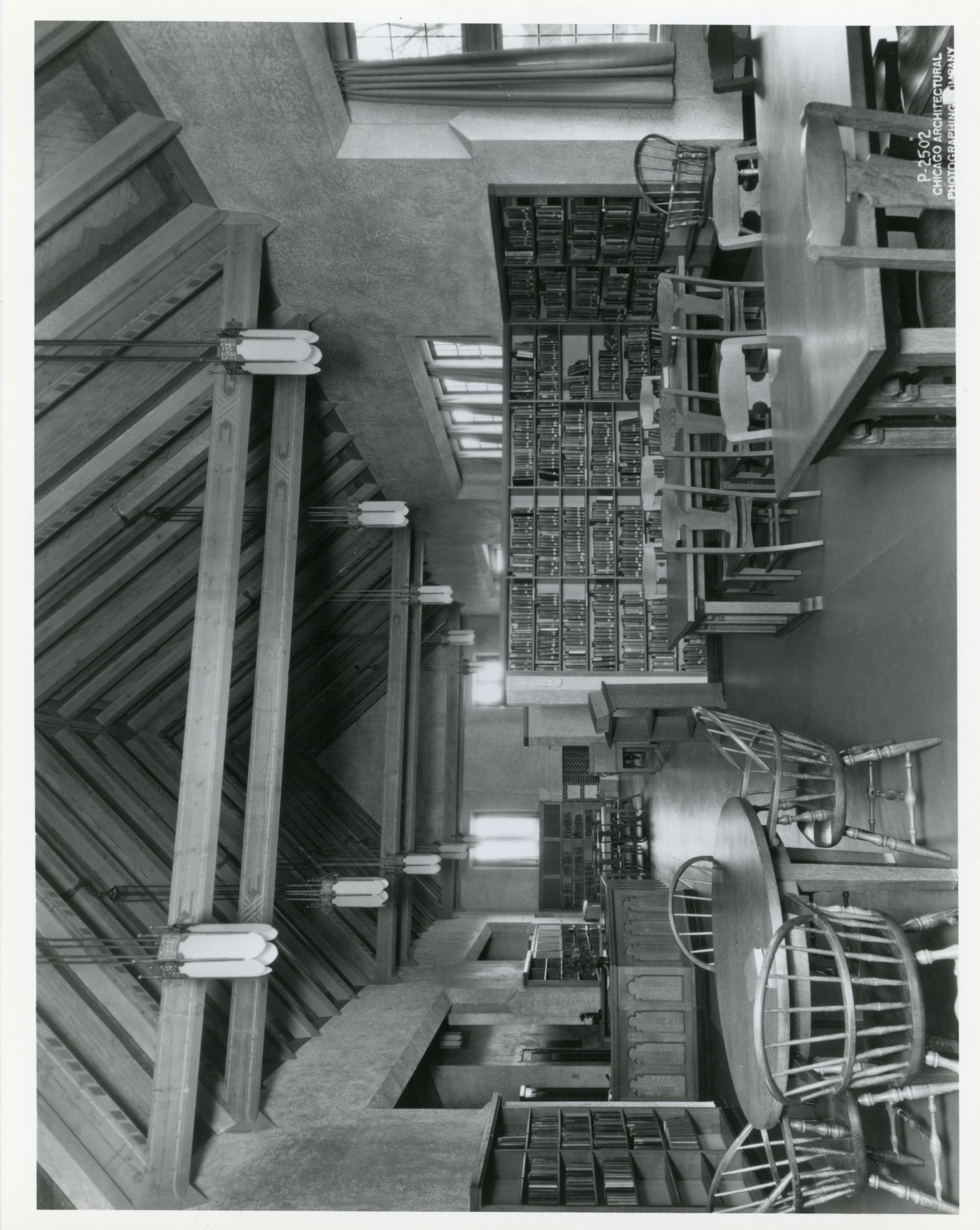In 1898, the River Forest Women’s Club put in motion the process of establishing a public library for River Forest. They created a committee whose actions resulted in the calling of special elections to establish a tax levy in support of the library and to elect the members of the first library board of trustees.
Throughout the next few years, the Women’s Club and the Library board worked to get a library building constructed. A site was available; however, there were not enough funds for the construction of a building. A request was put in for Carnegie monies, but it was denied because the neighboring community of Maywood had recently received Carnegie funds.

Finally, in 1904, a contract was signed with W.A. Gerts to begin construction on a building to house the library at 508 Park Avenue, just north of Lake St. On September 26, 1905, the Library officially opened with 1,000 volumes on the shelves. The first librarian was Mrs. Stella H. Nida, who received a salary of $15 per month. In October of 1908, the Library board approved the use of the Library for programs. Throughout the next several years, use of the Library steadily grew. The hours of operation increased, new volumes were added, and varied library programs were developed.
In July of 1923, the Library and the River Forest Park District entered into a 99-year lease for the property at 735 Lathrop Avenue so that a new building could be constructed. In 1928, a bond issue was passed by the residents of River Forest, allowing construction to begin on the new building. Designed by Prairie School architect William Drummond, the new brick building featured fireplaces and leaded glass windows. It was officially opened to the public on October 13, 1929.

Throughout the 1930s, 40s, and 50s, library use and volumes owned continued to grow. During the 1960s, the Library became air conditioned and switched to gas heat. Circulation was over 100,000 volumes per year by this time, and in 1966, the Library joined the Suburban Library System. In 1975, Friends of the Library was started, and they held their first biennial Book Sale in 1976.
Throughout the 1980’s, discussions on expanding the building were held, architects hired, and plans approved. On September 9, 1989, ground was broken on the new addition to the Library. The original building was lifted four feet off the ground during the process and the two parts of the building were connected with a large skylight. On October 25, 1992, the newly expanded River Forest Public Library had its grand opening celebration. During the late 90s, the Library added computers and joined the shared Suburban Library System catalog SWAN.
Over the subsequent years, more patron Internet computers were added and the Library began subscribing to online databases, providing patrons with access to a whole new wealth of resources. The volume of library materials available continued to expand and new formats were added to the collection. Over time, the Library began circulating material in a variety of formats, including video games, Blu-ray movies, downloadable and streaming eBooks, eAudiobooks, movies, music, digital magazines, and more. Patrons also gained access to eReaders and high-quality online learning programs.
The Anne T. Smedinghoff Memorial Garden was dedicated on June 1, 2013. The garden and courtyard space honors the memory of River Forest resident Anne Smedinghoff. Anne was serving in the U.S. Department of State as a Foreign Service Officer in Kabul, Afghanistan, when she and five other Americans were killed in a suicide bomb attack on their way to deliver books to a local school.
In the fall of 2019, the first-floor lobby and staff spaces underwent a significant renovation. Improvements included a bi-level accessible welcome desk, improved lobby display boards and digital display signage, more convenient patron holds shelf, a new self-check station, and a water fountain with water bottle filling station. LED lighting was added throughout the area to lower energy consumption and reduce energy costs. The staff area was reconfigured to include an enclosed staff break room with adjacent staff wellness room, and a small conference room.
The River Forest Public Library Foundation, which was founded in 2015, has helped fund Library projects through generous grants. Among other projects and initiatives, the Foundation has funded maintenance of the Anne T. Smedinghoff Memorial Garden and helped to fund a significant refresh of the Children’s Room. The 2019 updates featured new face-out picture book shelving to entice young readers to browse the collection, a new service desk, and fresh carpeting and paint.
The Foundation also awarded grant funding to support the relocation of mechanical equipment to the exterior of the Library, making it possible to add a second program room to the building in 2024.
Even as we explore new possibilities for sharing content and information, our print collection and traditional library services remain strong. We continue to meet the needs of patrons of all ages by offering engaging programs like storytimes, teen craft and gaming programs, book club meetings, interesting lectures, and much more. Librarians offer in person, telephone, email and online reference support, helping patrons find the information they need. Staff members create curated booklists and love to recommend great reads. Our historic building remains a welcoming place for all to visit while our online library is open all the time.
Resources Consulted
“A History of the River Forest Public Library” by Susan Hanes. Published in the pamphlet River Forest Public Library, 1900-2000, Celebrating 100 years. May 2000; River Forest, Illinois.
Reflections: A History of River Forest by Harriet Hausman. 1975.
River Forest: A Suburb of Chicago by Albert Hall. 1938
Links
William E. Drummond and the River Forest Library
River Forest Public Library Foundation
Photos: Courtesy of Oak Park River Forest Museum